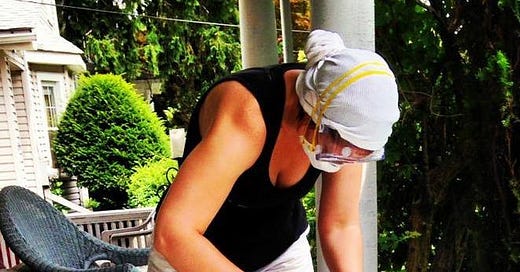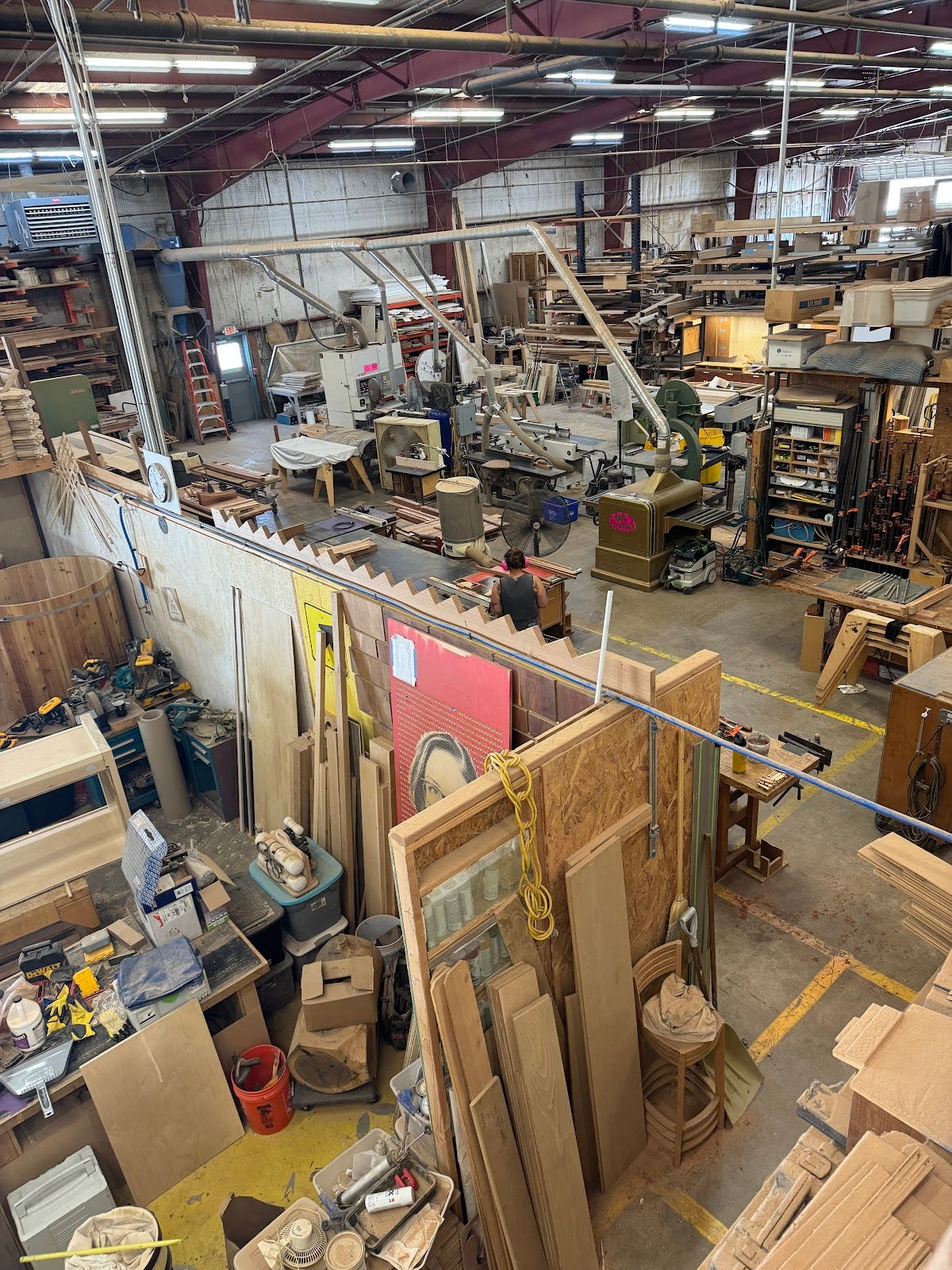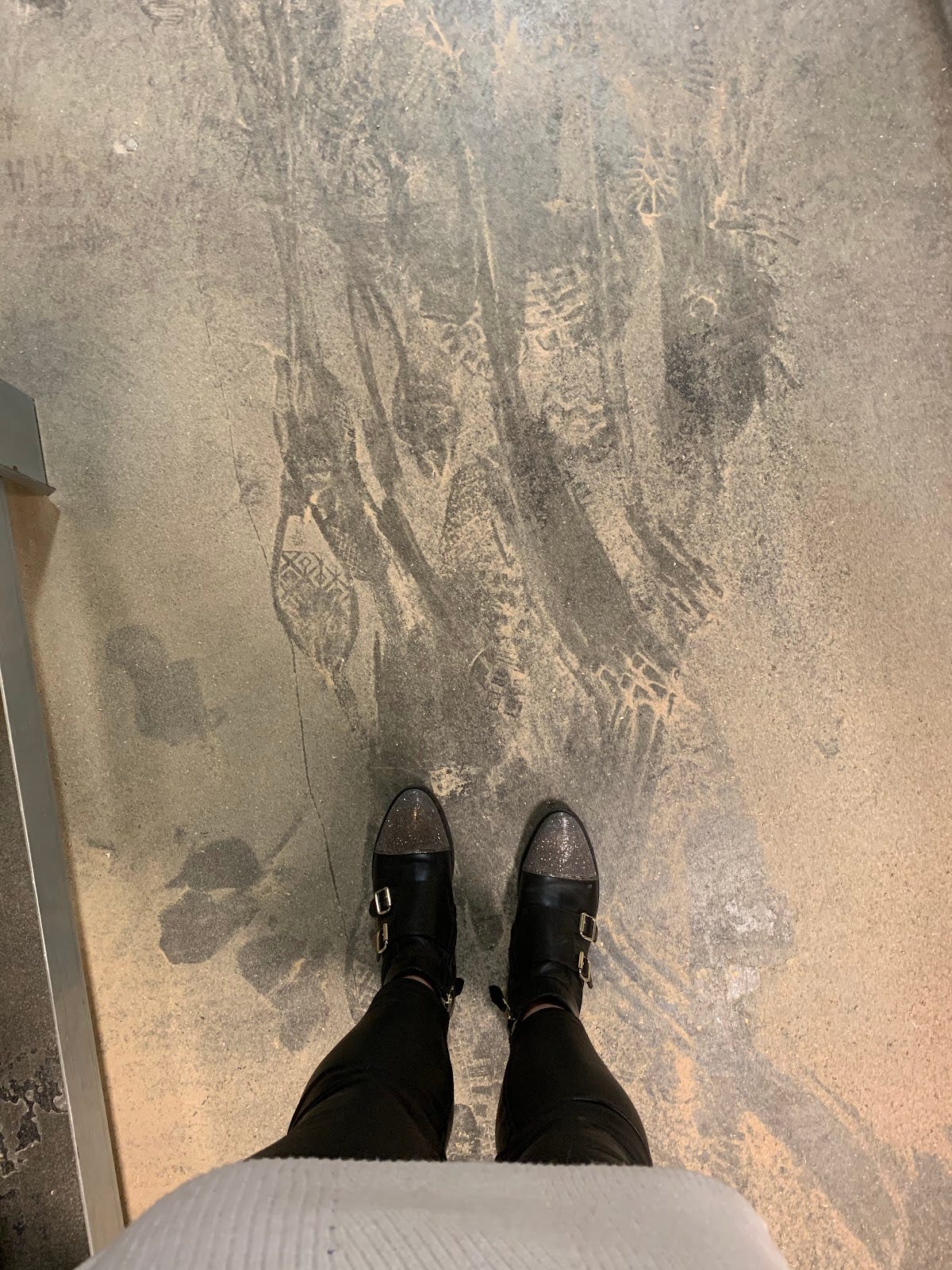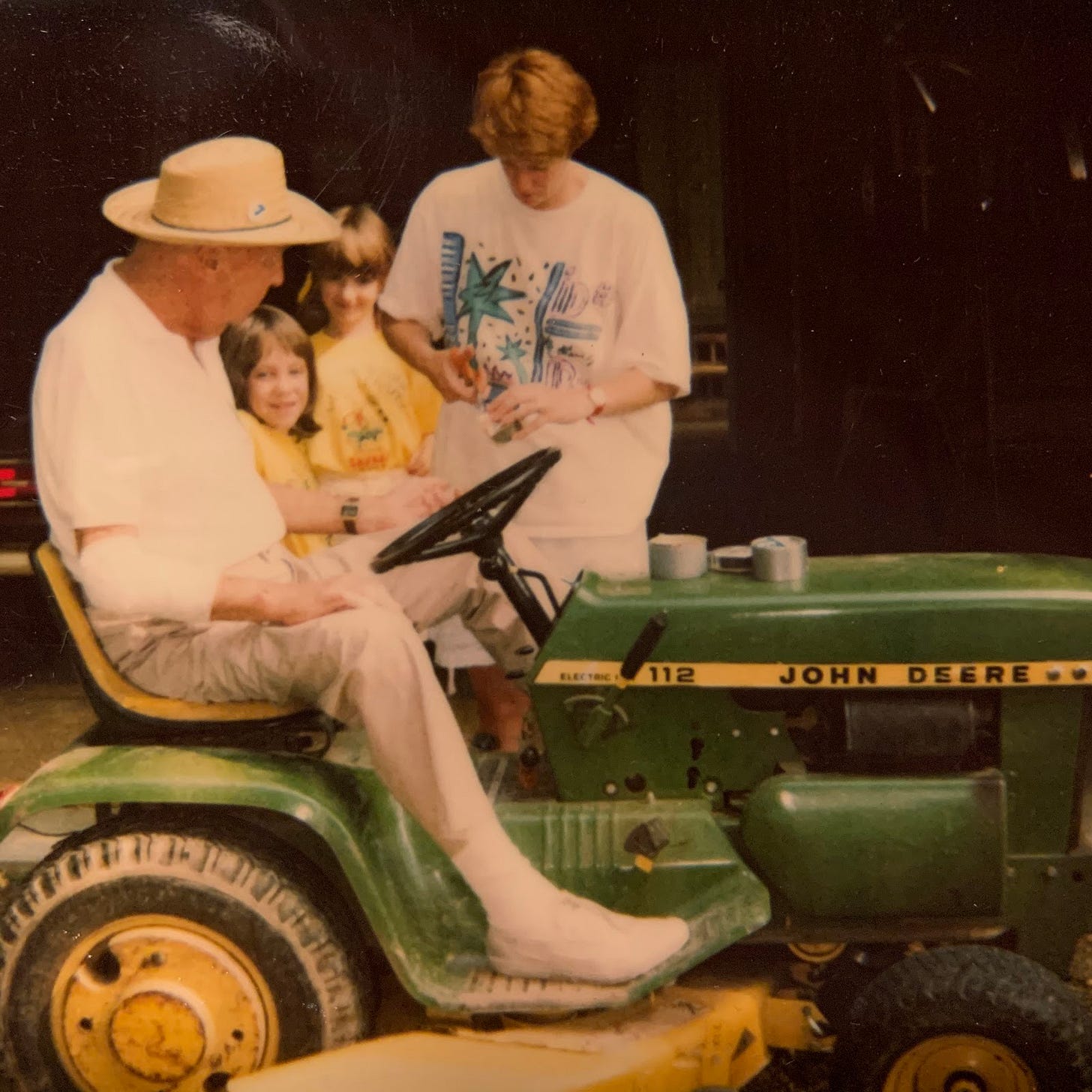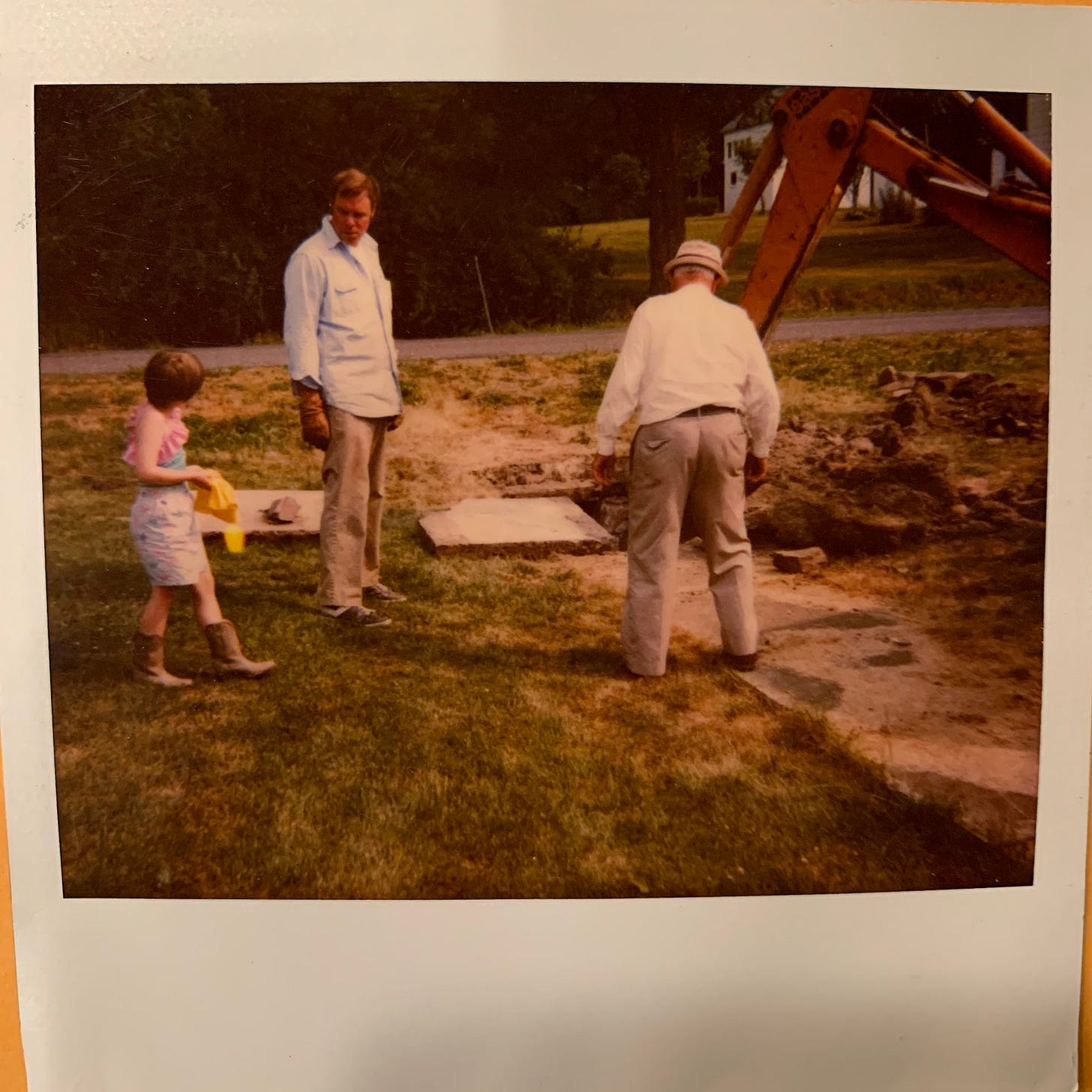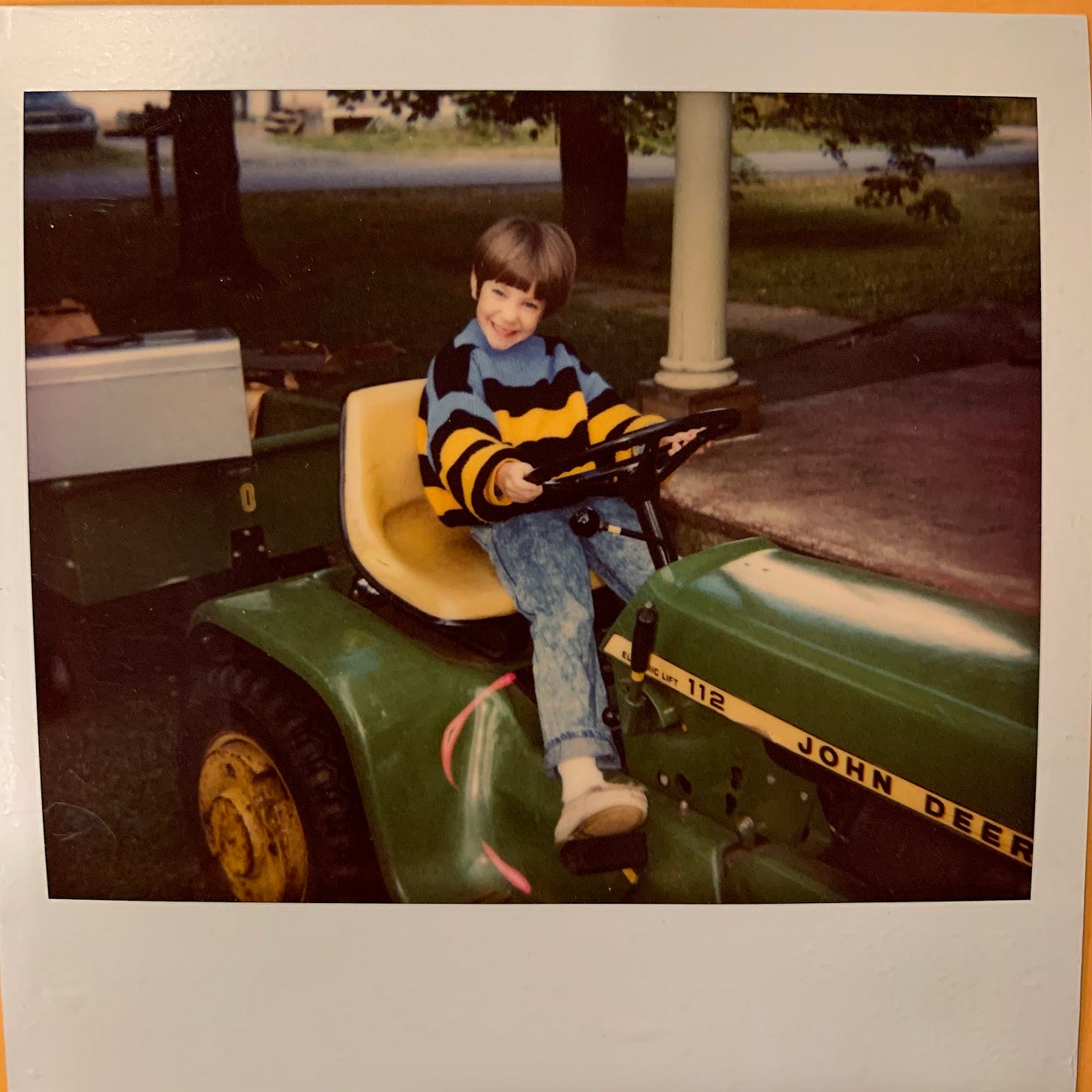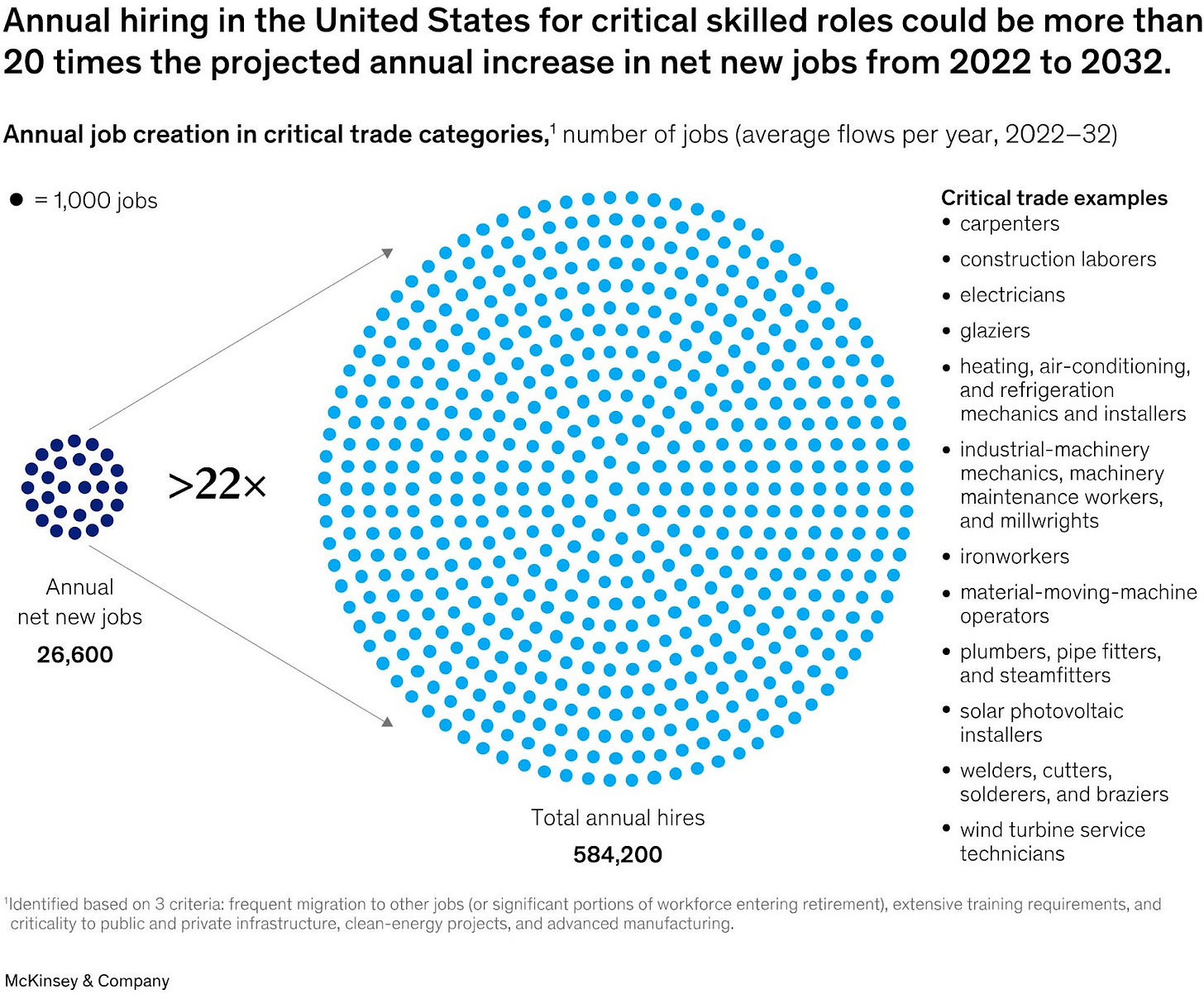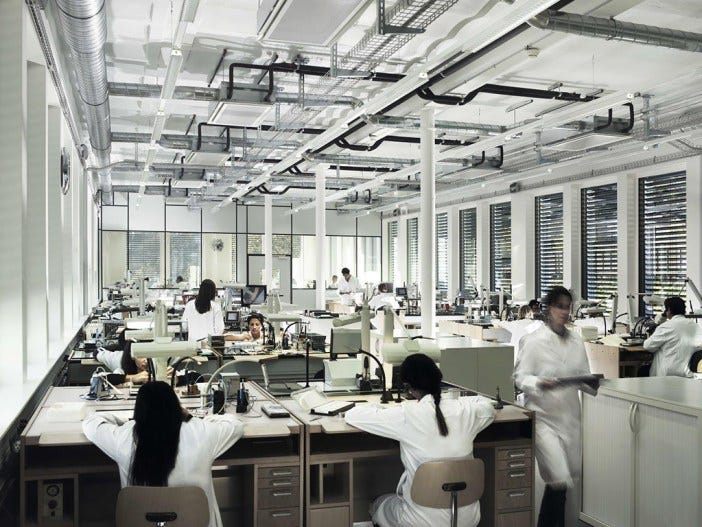a love letter to building with your own two hands
Why i love the smell of wood // My recent trip to Austin with client Stuga // recontextualizing Technology & skilled trades // pics of me rocking a power sander and riding a John Deere
I just got back from a week spent in Austin, visiting my first ever - and first boomerang - client Stuga. As this was my first work trip - post baby, post pandemic - I got a bit nostalgic and mushy emotional about my career and the places it has taken me. But mostly, it reinforced my love for the trades, craftsmanship and wood.

Founded by Marc Bacher, Stuga is a curated marketplace of sustainable, Scandinavian flooring that promotes wood for wellbeing. While he imports from a select group of manufacturers - that he himself vetted while living in Sweden for many years - Austin is where Stuga calls home.
This is where our team of rockstars (seriously - actual musicians) cut samples and nose parts, something that you can’t find at Lumber Liquidators (despite their attempted rebrand to LL Flooring - after lawsuits about toxicity levels - no one is fooled). And as the brand has grown, so has the team. So, to on-board new talent and plan the rest of our year, we gathered to talk strategy, brand, and the beautiful allure of wood.
Stuga’s office is located inside Tools Mark Collective, a co-woodworking shop appropriately located on E Caesar Chavez in Austin. To me, it is a version of heaven. An old warehouse, cut into bays that local makers rent to create custom pieces that transform people’s lives. Saw dust everywhere. Piles of wood stacked. Multiple projects going at once. And no screens or keyboards in sight.
There’s something about a wood shop. The smell. The saw dust. The heavy depth of the wood, that is also so, so soft - especially when lovingly finished down. You don’t go straight to the fine grain. You gradually go down - starting with the roughest grain, getting the big rifts out of the way, and if you take your time and go slowly, you can get the softest, nearly cashmere touch.

Because I was jealous of their working space - yes, even despite the July Texas heat - I spent as much time as possible chatting with the guys who work with us, learning about how they got into woodworking. One of the guys - Falcon, a part time craftsman and forever musician - said he loved solving problems. And that being a woodworker by day and drummer by night did just that: both require math and balance, and taking care to follow the process.
All to create something beautiful.
This was not my first wood shop, nor my first manufacturing floor. And it was such a good reminder that I’m happiest when working with builders of good things. This love of craft and tradespeople all started by spending summers with my Grandpa Gus at his childhood farm in Paintersville, PA.
While he did NOT teach me anything about construction or engineering (because I was a girl and it was the 80s // thank you, vintage patriarchy) - he did instill in me a love of craftsmanship and precision.
I spent hours following him and his friends around as they dug holes and tended the garden and built a front porch to watch the fog roll in off the mountain each morning.
I don’t fault my grandfather for not taking the time to teach me. Instead, I credit him for piquing my interest in craft from a very early age. It is this interest that has guided me to work with some of the best manufacturers in the world, from Zenith Swiss Watch Manufacture to PANTONE, the Color Standard Company, to the only American luxury kitchen system company.
And while my impact has not been on the manufacturing floor, my role is often like the pic above - hanging around craftspeople, excited to learn about what they are doing and why - and then telling their story for them (to get them more business to continue their commitment to craft).
This is also why I say I help good people do good things.
Because it’s not what’s being built that matters - it’s the focus and expertise and commitment that excites me. And I’m lucky, as this translates into so many beautiful areas - like jewelry, Swiss Watches, wallpaper, lighting, flooring, healthy building standards, advocacy work, quinoa beer - the list goes on.
Early in my consultant life, I met a tech marketer who immediately criticized this line, saying it meant nothing. And I hate to admit, I took it out for a while. But what I’ve realized is that this line resonates to some people - and means something to them. If it doesn’t, then I’m probably not the right consultant for you. And that’s ok! Because I don’t want to build another tech platform. Or a saas solution. Or the 4th iteration of a supposedly competitive new product in a saturated market.
I want to help good people build things. Things that are needed and necessary and built better.
And I work best when collaborating with people who care. Who worry about doing things right and building up the people around them. Leaders who are committed to a definition of success that means everyone around them is benefiting as well. People who may not take the easy path, but instead focus on the one that means the most to them.
I’m writing this on Monday, August 5th as the cooling US job market is creating a ripple effect on global economies. As the job market has continued to change since the initial disruption of the pandemic, I’m sensing that more and more people are not doing things they love. And yes, we all have to do some things we don’t love in order to pay our bills, but what would it look like if we loved more than we hated?
Maybe it’s time to look at building with our own two hands again.
I won’t reduce the men and women in manufacturing I’ve met to happy little workers, toiling with their tools and whistling happy songs. But if I look at them in comparison to some of my corporate colleagues working in cube farms - it’s those who are working with their hands (typing on a keyboard does not count) who ultimately seem the happiest. Is it the sense of control? Is it that they are making something real, something tangible, something that brings joy upon touch? Maybe it’s constantly moving their bodies, not staying stationary. Collaborating with people to solve problems. Shooting the shit between projects, and realizing that you have very niche music tastes and experiences in common. Because I love the chance to tell the story about when I met Jerry Only at the posthumous 51st birthday party for Joey Ramone at CBGBs. (See? I did it again. He hugged me - sweaty and leather clad - after this show and I nearly died of happiness).
Maybe it’s the thrill of solving problems.
And right now, there are a lot of problems that could potentially be solved by looking in new (old) places.
I’ve worked with so many design brands throughout my career, and so have also had the pleasure of working with so many different tradespeople. And saw firsthand that the connection between a designer and tradesperson is the difference between a dream and reality. Farrow & Ball paint is only as good as the painter who took care to apply it correctly. Hennepin Made lighting doesn’t shine unless installed correctly. Henrybuilt’s system still needs contractors to level and install.
So I’ve been aware for years how the specialty trades are dying off, such as paper hangers and artistic mill workers. And as an executive with a LinkedIn account, I’ve also been witnessing these never-ending waves of tech layoffs.
For all the tech industry innovation, it also seems like the bubbles bursting hits harder each time. News of layoffs create ripples of fear across all other sectors as a new wave of talented individuals are left asking “which tech companies are still hiring” when maybe they should be asking “what could I do next?”
Again, not simplifying how upsetting this can be (I was laid off from my beloved Zenith position in January 2009) - but maybe the opportunity is to solve new (old) problems.
There is a massive need for new talent in the manufacturing and construction industries, especially when you look at the historic efforts outlined in the Bipartisan Infrastructure Law passed by the Biden Harris administration. There’s all this money to improve our bridges, tunnels and roads - but not enough skilled labor to do the work.
Forbes sees this opportunity, too, with this recent article: “Why Gen Z Can Solve the Skilled Labor Shortage.” TL/DR - college is expensive and no longer guarantees high-paying job security, despite negative perceptions you can actually earn a lot in the trades, and AI can’t build real stuff.
I see the opportunity right there in the words. While Silicon Valley may have co-opted the term “technology,” and made us all think of internet things and “platforms,” the actual definition applies to everything.
According to Merriam Webster, technology can mean “the practical application of knowledge, especially in a particular area; a capability given by the practical application of knowledge.”
Innovation and design has been shaped by experts who used conditions outside of their control to open, not close, opportunities by applying their knowledge in new ways. For example, farmers in the Swiss mountains learned to make watches during long winter months, to inspire them in between fixing up their farming tools. Who else could have come up with the El Primero movement.
So to all my tech friends who’ve lived behind screens - maybe it’s time to think about applying your specific knowledge to a new area. Maybe even a more fulfilling one.
And to all my craftspeople who want to keep building and need a partner to grow, I’d love to chat.
In between teaching my daughter how to build with her own two hands.


